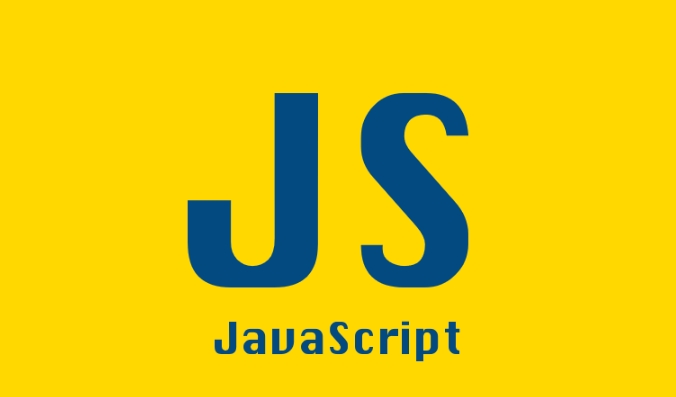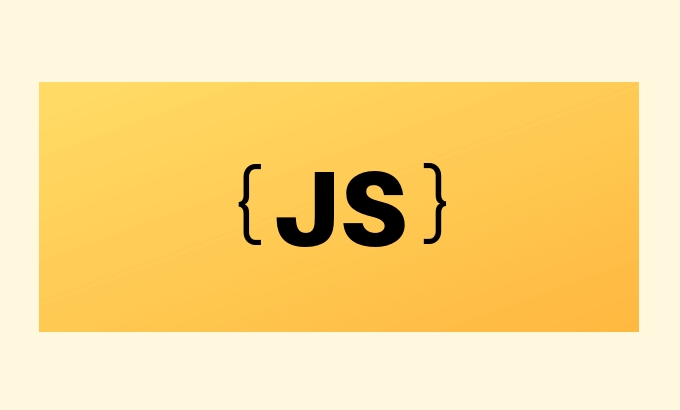What is the virtual DOM and how does it relate to js frameworks?
Virtual DOM is a programming concept that optimizes UI updates and is used in frameworks such as React and Vue. Its core principle is to create a lightweight DOM copy, compare it in memory, calculate the minimum update set, and finally batch update the real DOM, thereby reducing expensive direct operations. This method can effectively reduce the performance loss caused by layout reordering and redrawing, allowing developers to write declarative UI code more efficiently. Although not all frameworks rely on virtual DOMs (such as Svelte), it can significantly improve performance and simplify the development process in large dynamic applications.

The virtual DOM is a programming concept used in JavaScript frameworks like React and Vue to improve performance when updating the user interface. Instead of directly manipulating the real DOM every time there's a change, these frameworks create a lightweight copy — the virtual DOM — and use it to calculate the most efficient way to update the actual DOM.

This approach helps reduce the number of expensive direct DOM operations, which can be slow compared to JavaScript object manipulations.

Why the DOM is Slow
The real DOM (Document Object Model) is part of the browser's API that allows programs to inspect and modify a website's structure and style. While essential for building interactive web pages, directly changing the DOM — especially in large or frequently updated apps — can be slow because:
- Each DOM operation can trigger layout (recalculating element positions and sizes) and paint (redrawing pixels on screen), both of which are costly.
- Frequent updates can lead to layout thrashing , where the browser constantly recalculates layout due to rapid changes.
So, instead of touching the real DOM with every small change, frameworks use the virtual DOM as an optimization layer.

How the Virtual DOM Works
When data changes in a component-based framework like React, here's what happens behind the scenes:
- A new virtual DOM tree is created based on the updated data.
- This new tree is compared ("diffed") against the previous version using a diffing algorithm.
- The algorithm identifies the minimum set of real DOM changes needed.
- These changes are then batched and applied to the real DOM all at once.
This process is called reconciliation , and while it still involves JavaScript work, it's generally faster than making multiple real DOM updates.
Virtual DOM vs. Real DOM: Practical Impact
In practice, the virtual DOM helps developers write declarative UI code without worrying about performance trade-offs. You tell the framework what the UI should look like, and it figures out how to update it efficiently.
For example:
- If you have a list of 100 items and only one changes, the framework doesn't re-render the whole list. It just updates the one item in the real DOM.
- This makes development easier and more predictable, even if the underlying optimizations aren't always the fastest possible.
Some modern frameworks like Svelte skip the virtual DOM entirely by compiling components into highly efficient important code. But for many developers, especially those working with React, the virtual DOM remains a powerful abstraction.
When Does It Matter?
You probably won't notice the difference in small apps. But in larger applications with dynamic content, the virtual DOM can make a real impact by:
- Reducing visual lag
- Preventing unequal repaints
- Making it easier to reason about UI updates
It's not magic — it's just a smart way to handle something that would otherwise be error-prone and slow if done manually.
So yeah, the virtual DOM isn't a browser feature or a special API. It's just a pattern — a smart trick that many JS frameworks use under the hood to keep your app fast and your code clean.
The above is the detailed content of What is the virtual DOM and how does it relate to js frameworks?. For more information, please follow other related articles on the PHP Chinese website!

Hot AI Tools

Undress AI Tool
Undress images for free

Undresser.AI Undress
AI-powered app for creating realistic nude photos

AI Clothes Remover
Online AI tool for removing clothes from photos.

Clothoff.io
AI clothes remover

Video Face Swap
Swap faces in any video effortlessly with our completely free AI face swap tool!

Hot Article

Hot Tools

Notepad++7.3.1
Easy-to-use and free code editor

SublimeText3 Chinese version
Chinese version, very easy to use

Zend Studio 13.0.1
Powerful PHP integrated development environment

Dreamweaver CS6
Visual web development tools

SublimeText3 Mac version
God-level code editing software (SublimeText3)
 Advanced JavaScript Scopes and Contexts
Jul 24, 2025 am 12:42 AM
Advanced JavaScript Scopes and Contexts
Jul 24, 2025 am 12:42 AM
The scope of JavaScript determines the accessibility scope of variables, which are divided into global, function and block-level scope; the context determines the direction of this and depends on the function call method. 1. Scopes include global scope (accessible anywhere), function scope (only valid within the function), and block-level scope (let and const are valid within {}). 2. The execution context contains the variable object, scope chain and the values of this. This points to global or undefined in the ordinary function, the method call points to the call object, the constructor points to the new object, and can also be explicitly specified by call/apply/bind. 3. Closure refers to functions accessing and remembering external scope variables. They are often used for encapsulation and cache, but may cause
 Vue 3 Composition API vs. Options API: A Detailed Comparison
Jul 25, 2025 am 03:46 AM
Vue 3 Composition API vs. Options API: A Detailed Comparison
Jul 25, 2025 am 03:46 AM
CompositionAPI in Vue3 is more suitable for complex logic and type derivation, and OptionsAPI is suitable for simple scenarios and beginners; 1. OptionsAPI organizes code according to options such as data and methods, and has clear structure but complex components are fragmented; 2. CompositionAPI uses setup to concentrate related logic, which is conducive to maintenance and reuse; 3. CompositionAPI realizes conflict-free and parameterizable logical reuse through composable functions, which is better than mixin; 4. CompositionAPI has better support for TypeScript and more accurate type derivation; 5. There is no significant difference in the performance and packaging volume of the two; 6.
 Mastering JavaScript Concurrency Patterns: Web Workers vs. Java Threads
Jul 25, 2025 am 04:31 AM
Mastering JavaScript Concurrency Patterns: Web Workers vs. Java Threads
Jul 25, 2025 am 04:31 AM
There is an essential difference between JavaScript's WebWorkers and JavaThreads in concurrent processing. 1. JavaScript adopts a single-thread model. WebWorkers is an independent thread provided by the browser. It is suitable for performing time-consuming tasks that do not block the UI, but cannot operate the DOM; 2. Java supports real multithreading from the language level, created through the Thread class, suitable for complex concurrent logic and server-side processing; 3. WebWorkers use postMessage() to communicate with the main thread, which is highly secure and isolated; Java threads can share memory, so synchronization issues need to be paid attention to; 4. WebWorkers are more suitable for front-end parallel computing, such as image processing, and
 Building a CLI Tool with Node.js
Jul 24, 2025 am 03:39 AM
Building a CLI Tool with Node.js
Jul 24, 2025 am 03:39 AM
Initialize the project and create package.json; 2. Create an entry script index.js with shebang; 3. Register commands through bin fields in package.json; 4. Use yargs and other libraries to parse command line parameters; 5. Use npmlink local test; 6. Add help, version and options to enhance the experience; 7. Optionally publish through npmpublish; 8. Optionally achieve automatic completion with yargs; finally create practical CLI tools through reasonable structure and user experience design, complete automation tasks or distribute widgets, and end with complete sentences.
 How to create and append elements in JS?
Jul 25, 2025 am 03:56 AM
How to create and append elements in JS?
Jul 25, 2025 am 03:56 AM
Use document.createElement() to create new elements; 2. Customize elements through textContent, classList, setAttribute and other methods; 3. Use appendChild() or more flexible append() methods to add elements to the DOM; 4. Optionally use insertBefore(), before() and other methods to control the insertion position; the complete process is to create → customize → add, and you can dynamically update the page content.
 Advanced Conditional Types in TypeScript
Aug 04, 2025 am 06:32 AM
Advanced Conditional Types in TypeScript
Aug 04, 2025 am 06:32 AM
TypeScript's advanced condition types implement logical judgment between types through TextendsU?X:Y syntax. Its core capabilities are reflected in the distributed condition types, infer type inference and the construction of complex type tools. 1. The conditional type is distributed in the bare type parameters and can automatically split the joint type, such as ToArray to obtain string[]|number[]. 2. Use distribution to build filtering and extraction tools: Exclude excludes types through TextendsU?never:T, Extract extracts commonalities through TextendsU?T:Never, and NonNullable filters null/undefined. 3
 Micro Frontends Architecture: A Practical Implementation Guide
Aug 02, 2025 am 08:01 AM
Micro Frontends Architecture: A Practical Implementation Guide
Aug 02, 2025 am 08:01 AM
Microfrontendssolvescalingchallengesinlargeteamsbyenablingindependentdevelopmentanddeployment.1)Chooseanintegrationstrategy:useModuleFederationinWebpack5forruntimeloadingandtrueindependence,build-timeintegrationforsimplesetups,oriframes/webcomponents
 What are the differences between var, let, and const in JavaScript?
Aug 02, 2025 pm 01:30 PM
What are the differences between var, let, and const in JavaScript?
Aug 02, 2025 pm 01:30 PM
varisfunction-scoped,canbereassigned,hoistedwithundefined,andattachedtotheglobalwindowobject;2.letandconstareblock-scoped,withletallowingreassignmentandconstnotallowingit,thoughconstobjectscanhavemutableproperties;3.letandconstarehoistedbutnotinitial







